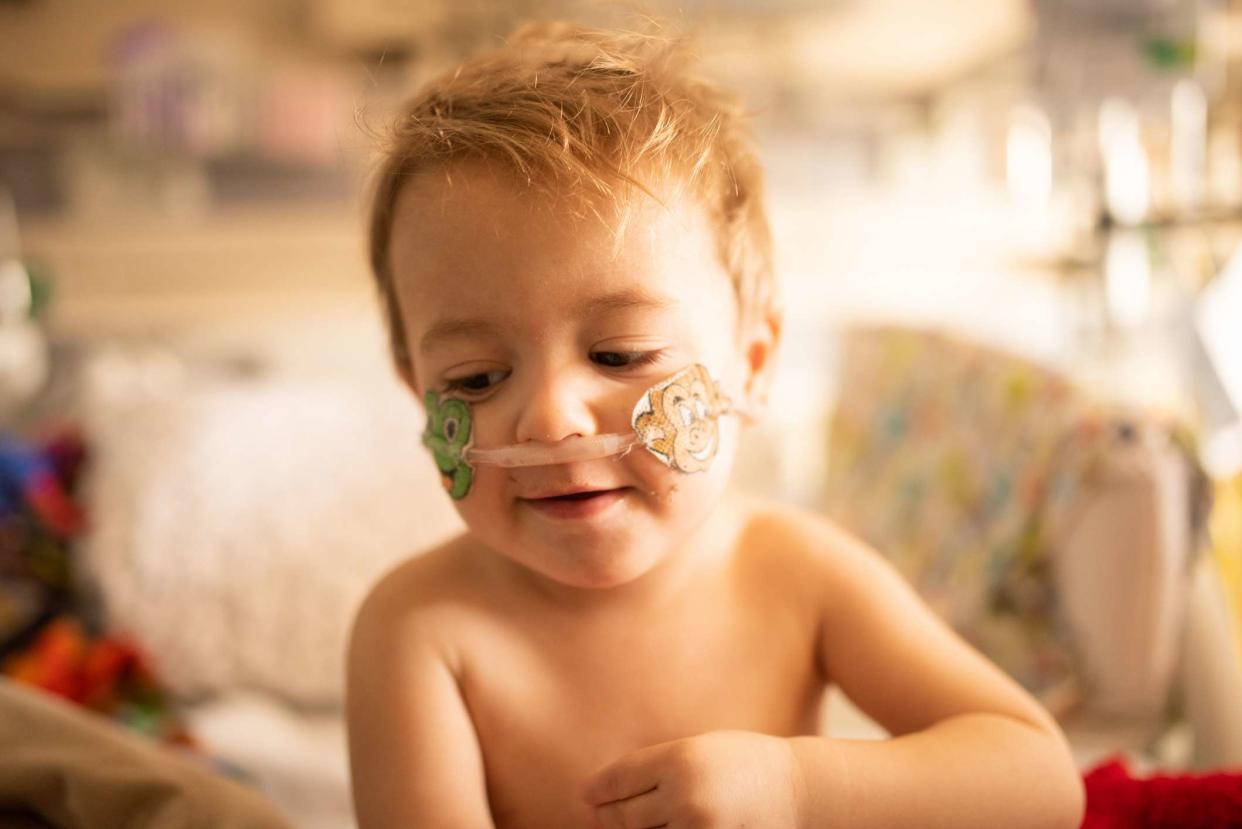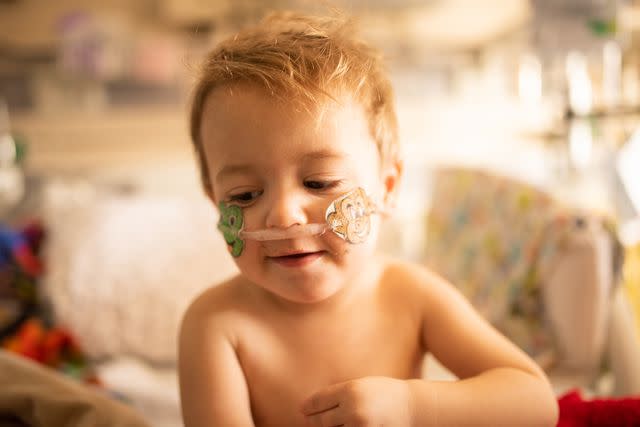What Causes RSV in Adults and Children?

Jill Lehmann Photography / Getty Images
Medically reviewed by Reza Samad, MD
Respiratory syncytial virus (RSV) is a common but highly contagious virus that usually causes mild, cold-like symptoms. While most people will recover from RSV within a week or two, babies under 6 months and adults over 60 are at high risk of complications and hospitalization.
RSV affects adults and children, causing runny nose, coughing, sneezing, and fever. In infants and older adults, RSV can sometimes lead to severe infections like bronchiolitis (inflammation of the small airways in the lungs) and pneumonia (an infection of the lungs).
This article explains how RSV is spread, how long the virus is contagious, and what you can be done to prevent RSV in adults and children.

Jill Lehmann Photography / Getty Images
What Causes RSV?
RSV is a highly contagious respiratory virus that can rapidly spread through communities and hospitals. It is a pervasive virus that affects virtually all children by the age of 3 years old. It's usually a mild and self-limiting disease (resolving without treatment).
Once the virus enters the body, it infects cells in both the upper respiratory tract (including the nose, throat, and larynx) and lower respiratory tract (including the trachea and lungs). This differs from the common cold, which is mainly limited to the upper respiratory tract. Symptoms are due to the body's response to the virus in the form of lung inflammation.
RSV reinfection is common throughout life, but certain groups—like infants and older adults—are at high risk of lower respiratory tract complications. This is evidenced by statistics from the Centers for Disease Control and Prevention (CDC) in which:
Between 60,000 and 160,000 adults 65 and older are hospitalized for RSV each year.
Between 58,000 and 80,000 children under 5 years are hospitalized for RSV each year.
Between 6,000 and 10,000 adults 65 and older die from RSV each year.
Between 100 and 300 children under 5 die from RSV each year.
All told, around 1.15 million people in the United States seek medical treatment for RSV annually. Infants are at greatest risk due to their immature immune systems, while older adults generally have weaker immune systems as they age.
Certain risk factors in adults and children increase the odds of severe illness with RSV:
Risk Factors in Adults
Being 65 and older
Having chronic heart or lung disease, like heart failure or chronic obstructive pulmonary disease (COPD)
Having a compromised immune system, such as caused by human immunodeficiency virus (HIV) or cancer treatment
Living in a nursing home or long-term care facility
Risk Factors in Children
Being under 6 months of age, especially preterm babies
Having congenital (present at birth) heart and lung problems
Having a compromised immune system, including primary immunodeficiency
Having a neuromuscular disorder, such as muscular dystrophy
Related: Symptoms of RSV Bronchiolitis
How the Virus Spreads
RSV is spread through direct or indirect contact with nasal secretions and saliva from someone with RSV. Transmission of the virus can occur when:
Someone with RSV coughs or sneezes, releasing airborne droplets that can enter your mouth, nose, or eyes.
You come into direct contact with the virus, such as through kissing.
You touch a surface with the virus on it, such as a doorknob or cell phone, and then touch your mouth or nose before washing your hands.
Once the virus enters the body through mucosal tissues in the mouth, nostrils, or eyes, it will rapidly multiply and spread. The incubation period (the time between exposure and symptoms) can take anywhere from two to eight days.
How Long Can RSV Live Outside the Body?
RSV can live on contaminated skin (such as the hands) for up to 25 minutes and on contaminated surfaces (like doorknobs and crib railings) for several hours. It doesn't appear to live as long on soft surfaces, such as tissues or towels.
How Long Is RSV Contagious?
People with an RSV infection may be contagious a day or two before symptoms appear. This is why RSV can rapidly spread through day care centers and preschools before the outbreak is contained. Once they have the infection, a child can bring the virus home and transmit it to others.
Some studies suggest that for every person with RSV, five to 25 others will acquire the virus as a direct result.
RSV symptoms tend to last between three and eight days, during which time the virus is contagious and can be transmitted to others. The infection can persist for longer in certain people, such as those who are immunocompromised, and they can remain contagious for longer.
RSV epidemics are seasonal, commonly occurring during late fall, winter, and/or spring. The timing and severity of "RSV season" can vary from year to year.
Related: Risks of RSV in Premature Babies
How to Prevent RSV
The prevention of RSV is similar to the prevention of other respiratory viruses like the flu and COVID-19. Vaccines and medications are available for older adults and children who are at greater risk of severe illness.
Standard Precautions
If you or your child develops cold-like symptoms, the following precautions can prevent the spread of infection:
Stay home if you are sick.
Cover coughs and sneezes with a tissue or your sleeve, not your hands.
Wash your hands frequently with soap and water for at least 20 seconds.
Avoid close contact with others who are sick. This includes kissing, shaking hands, or sharing cups or utensils.
Frequently clean often-touched surfaces with a general-purpose cleaner. This includes counters, doorknobs, and mobile devices.
Limit the time spent in child care centers and similar facilities during RSV outbreaks.
Preventing RSV in Older Adults
Two vaccines are available for adults 60 and over to prevent lower respiratory tract complications of RSV. Arexvy was approved by the Food and Drug Administration (FDA) in May 2023. Abrysvo was approved a month later.
The main difference between the two vaccines is that Arexvy has an adjuvant (a substance that boosts the immune response) , and Abrysvo does not. Both are extremely effective, but clinical studies have reported that Arexvy is slightly more effective in reducing the risk of lower respiratory complications than Abrysvo.
Both are given as a single dose by intramuscular injection, usually into the deltoid muscle of the upper shoulder. Side effects are similar and may include headache, fatigue, muscle aches, and injection site pain, redness, or swelling.
Related: Common Side Effects of RSV Vaccine
Preventing RSV in Children
Two drugs, Beyfortus (nirsevimab) and Synagis (palivizumab), can prevent RSV severe complications in babies and toddlers when they acquire an RSV infection. They are not vaccines but drugs called monoclonal antibodies that mimic the body's immune response to specific diseases.
Beyfortus and Synagis are not intended for children who have already been infected with RSV.
Beyfortus, approved by the FDA in June 2023, can provide protection during the average RSV season with a single intramuscular shot. The drug is approved for:
Infants under 8 months who are born during or entering their first RSV season
Children between 8 and 19 months who remain at risk of RSV complications (such as those with lung disease) and are entering their second RSV season
Syngagis, approved in 1998, also offers protection during RSV season but needs to be given by monthly intramuscular injection. The drug is approved for:
Children born during or entering their first RSV season
Children up to 24 months who remain vulnerable to RSV complications through their second RSV season
Side effects are similar and may include mild fever, rash, and injection site redness, pain, and swelling.
Related: RSV Prevention in Children
Summary
Respiratory syncytial virus (RSV) is a highly contagious virus that can be spread through airborne droplets, contaminated surfaces, or close contact with people who have the virus. RSV may be contagious one or two days before symptoms appear and continue to be contagious until symptoms resolve.
Infants and older adults are at high risk of severe complications like pneumonia. In addition to taking standard precautions (such as washing your hands and covering sneezes), two vaccines can protect older adults from severe illness, and two monoclonal antibodies can protect children during their first and possibly second RSV season.

